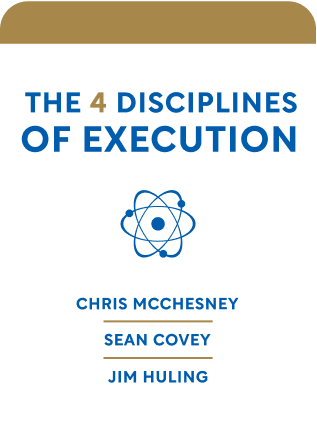

This article is an excerpt from the Shortform book guide to "The 4 Disciplines of Execution" by Chris McChesney, Sean Covey, and Jim Huling. Shortform has the world's best summaries and analyses of books you should be reading.
Like this article? Sign up for a free trial here .
Are you a leader trying to choose what to commit to for your goals and lead measures? Is there a strategy for choosing 4DX commitments?
In 4DX, commitments come after you’ve set WIGs and lead measures. The commitments you select will help achieve the lead measures.
Keep reading for how to choose 4DX commitments to support success on your WIGs.
How to Choose 4DX Commitments
As the leader, you have two roles at the commitment-choosing stage—you need to choose your own commitments and guide your team members in choosing theirs.
To come up with 4DX commitments, brainstorm one or two specific things that affect the lead measures. Don’t ask yourself what the most important thing you can do that week is, because you’ll come up with something in the whirlwind.
The 4DX commitments don’t have to address anything urgent. They don’t have to be new ideas—they might be things you’re well aware you should be doing; you only haven’t been able to do them because of the whirlwind. Here are some things to consider when deciding on commitments:
- Focus. Everyone should choose only one to two commitments.
- Importance. Commitments should be high impact and make a big difference
- Personal. Commitments are things you will do, not things you will commit other people to do. When working with others, commit only to the parts you will be doing yourself.
- Timeliness. Commitments must be short enough to be completed within the following week. If a multiweek commitment is necessary, commit only to the parts that you can do in the next week. The week timeline is very important—it creates urgency that can’t be eaten by the whirlwind. Additionally, the commitment must also produce results within a short period of time. If you’re not going to see the impact of the commitment on the lag measure in the near future, it doesn’t fit the weekly schedule.
- For example, don’t accept “I’m making progress” as a result in a WIG session.
- Effect on the WIG. The 4DX commitments must directly move the lead and lag measures. No whirlwind commitments!
- Specificity. It’s hard to be accountable for something vague. Commitments should contain what you’ll do, when you’ll do it, and what the outcome should be.
As the leader, you have an additional source for commitment ideas—the “system.” The most effective commitments for leaders tend to be things that improve the team’s execution (versus commitments that directly influence the lead measure). Leaders should always consider 4DX commitments around:
- Training. You’ll always have a team member who needs training or to be reengaged. When coming up with a commitment to training, be specific: who and what skill
- Engagement. Talk to team members about their performance and ways to improve it. They probably have good ideas you can implement, and in addition to the team doing better, the person who came up with the idea feels valued
- Recognition and leading by example. Figure out who your top performers are and celebrate them in front of their colleagues. Ask your top performers to help the other people on the team.
- “Clearing the path.” As a leader you should always be offering help. Often you have the authority to help in a way no one else can.

———End of Preview———
Like what you just read? Read the rest of the world's best book summary and analysis of Chris McChesney, Sean Covey, and Jim Huling's "The 4 Disciplines of Execution" at Shortform .
Here's what you'll find in our full The 4 Disciplines of Execution summary :
- The 4 disciplines that can make any strategy a successful reality
- Why a great plan falls apart when you don't think adequately about execution
- The 6 steps you need to scale the 4DX model across an entire organization






